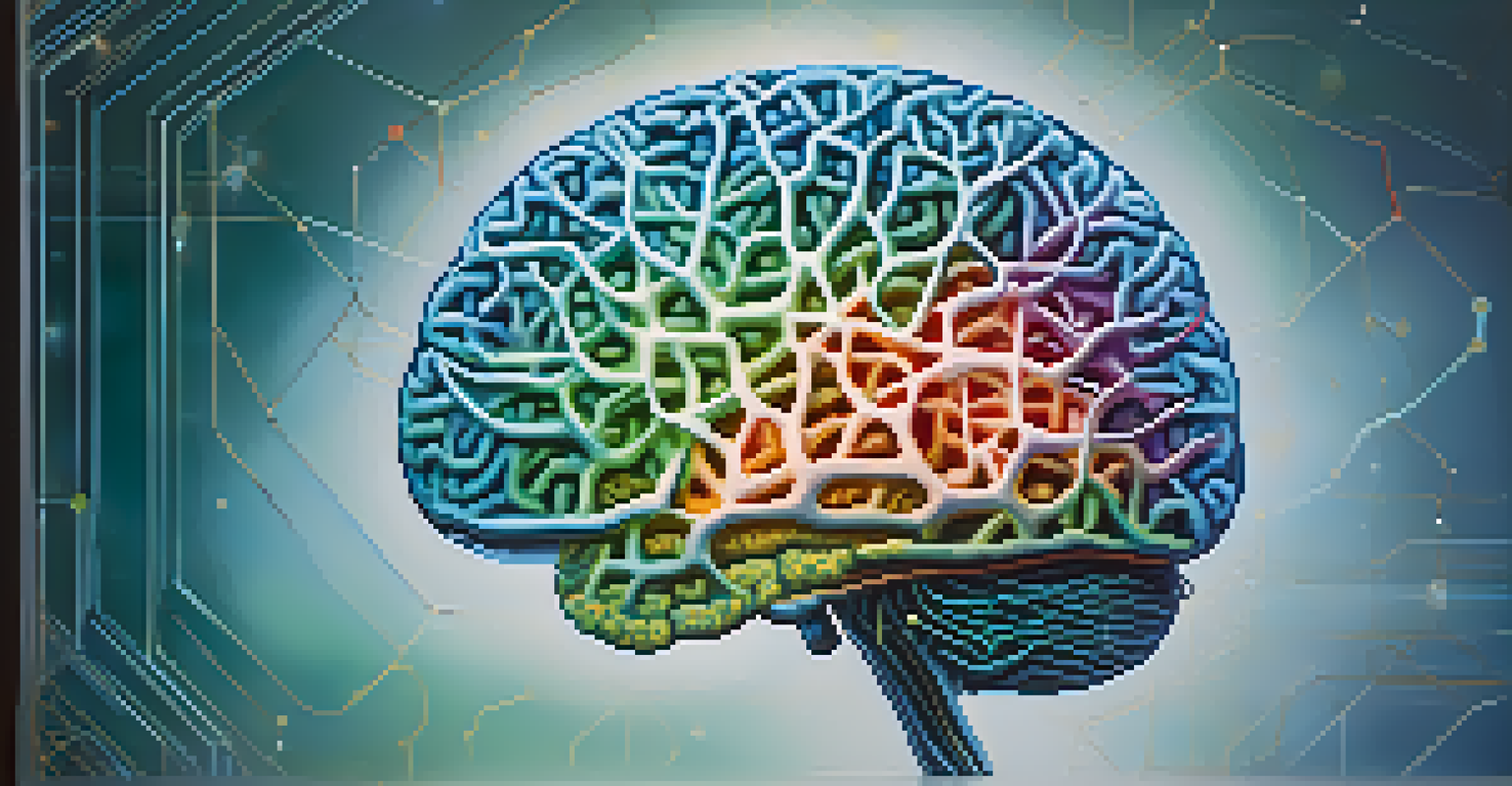The Science Behind Hallucinogens and Their Healing Potential

Understanding Hallucinogens: What Are They?
Hallucinogens are a class of substances that alter perception, mood, and cognitive processes. These compounds, which include substances like psilocybin (found in magic mushrooms) and LSD, can lead to profound experiences that some describe as spiritual or transformative. At their core, hallucinogens work by interacting with serotonin receptors in the brain, particularly the 5-HT2A receptor, which plays a crucial role in mood and perception.
Psychedelics are a kind of medicine that can help you unlock the doors of perception.
The effects of hallucinogens can vary widely among individuals, often influenced by set (the mental state) and setting (the physical environment). For some, these substances can induce vivid visual or auditory hallucinations, while others may experience deep introspection or emotional breakthroughs. Understanding the basic mechanics of hallucinogens is key to exploring their potential therapeutic benefits.
As research continues to evolve, these substances are gaining attention not just for their mind-altering effects but also for their potential healing properties. With a growing body of scientific evidence, the conversation around hallucinogens is shifting from taboo to treatment.
Historical Context: Hallucinogens Through the Ages
Hallucinogens have been used for thousands of years in various cultures for spiritual and medicinal purposes. Indigenous tribes in the Americas, for instance, have long utilized plants like peyote and ayahuasca in their rituals, believing these substances connect them to the divine. This historical context emphasizes the longstanding human fascination with altered states of consciousness and their perceived benefits.

In the mid-20th century, the Western world began to take notice of these substances, leading to both exploration and controversy. The counterculture of the 1960s popularized psychedelics, prompting both scientific interest and significant regulatory backlash. This duality illustrates the complex relationship society has with hallucinogens, oscillating between reverence and fear.
Hallucinogens Alter Perception
Hallucinogens like psilocybin and LSD interact with serotonin receptors, leading to profound changes in mood, perception, and cognitive processes.
Today, as we revisit these substances through a scientific lens, we see a resurgence in interest that is grounded in research. Historical usage provides a cultural backdrop that enriches our understanding of how these substances may offer healing and insight in contemporary settings.
The Brain on Hallucinogens: A Scientific Overview
When hallucinogens are consumed, they significantly alter brain function, leading to changes in perception, thought, and emotion. Research using neuroimaging techniques has shown that these substances can promote increased connectivity among different brain regions, particularly those associated with the default mode network, which is linked to self-referential thought and the sense of self.
The mind is everything. What you think you become.
This heightened connectivity may explain why individuals often report profound insights or a feeling of unity with the universe. The brain's altered state can break down rigid thought patterns, allowing for fresh perspectives and cognitive flexibility. This phenomenon is not just fascinating but vital for understanding their therapeutic potential.
Furthermore, these alterations in brain activity are being studied for their implications in treating mental health conditions such as depression, PTSD, and anxiety. By examining how hallucinogens influence brain chemistry and connectivity, researchers are uncovering pathways to healing that were previously overlooked.
Therapeutic Applications: Healing with Hallucinogens
Recent studies have indicated that hallucinogens may hold promise in treating various mental health disorders. For instance, research on psilocybin has shown significant reductions in depression and anxiety among cancer patients, suggesting that these substances can help individuals confront their fears and find peace. Such findings mark a paradigm shift in how we approach mental health treatment.
Moreover, therapeutic settings often involve guided sessions with trained professionals, ensuring safety and support during the experience. This structured approach helps individuals navigate their journeys, leading to meaningful insights and emotional healing. The combination of the substance's effects and professional guidance appears to create a powerful therapeutic alliance.
Therapeutic Potential of Psychedelics
Emerging research indicates that hallucinogens may effectively treat mental health disorders, such as depression and anxiety, especially when administered in guided sessions.
As more clinical trials emerge, the potential for hallucinogens to complement or even enhance traditional therapies becomes increasingly evident. This new frontier in mental health treatment could revolutionize how we address psychological distress, paving the way for more holistic approaches.
Risks and Considerations: Understanding the Downside
While hallucinogens show great promise, it's crucial to acknowledge the potential risks involved. Not every experience is positive; some individuals may encounter challenging or distressing emotions during their journeys. These difficult experiences, often referred to as 'bad trips,' can lead to anxiety or psychological distress if not properly managed.
Additionally, the legality and regulation of hallucinogens vary widely across countries and states, impacting accessibility for those seeking therapeutic benefits. Understanding the legal landscape is essential for anyone considering the use of these substances, whether for therapeutic or recreational purposes.
Ultimately, informed decision-making, supported by professional guidance, is vital for minimizing risks. By approaching hallucinogens with care and respect, individuals can navigate their potential safely and responsibly.
The Future of Hallucinogens in Medicine and Therapy
As research into hallucinogens continues to expand, the future of these substances in medicine looks promising. Increasingly, institutions are investing in studies that explore their effects on mental health, addiction, and even chronic pain. This growing body of research may soon lead to broader acceptance and integration of hallucinogens into conventional therapeutic practices.
Moreover, the conversations surrounding these substances are evolving, thanks in part to advocacy from both patients and researchers. As narratives shift away from stigma and towards understanding, public perception of hallucinogens as legitimate therapeutic tools is likely to change. This cultural shift is crucial for paving the way for policy changes that could enhance accessibility for those in need.
Cautious Exploration of Risks
While hallucinogens show promise, it's essential to acknowledge the potential for negative experiences and the importance of informed, responsible use.
In the coming years, we may see hallucinogens become a standard part of treatment plans, particularly in mental health care. As we embrace this potential, it’s essential to continue advocating for responsible usage and comprehensive education around these substances.
Final Thoughts: Embracing Healing Through Exploration
The exploration of hallucinogens as therapeutic agents invites us to reconsider our understanding of consciousness and healing. While these substances hold incredible potential, approaching them with an open mind and a respectful attitude is key. The journey into the world of hallucinogens is not just about the substances themselves but also about the insights they can provide into our own minds and experiences.
As we continue to unravel the science behind these compounds, we also open the door to new forms of healing and connection. The stories of individuals benefiting from hallucinogen therapy highlight the profound impact these experiences can have on mental health and well-being.

Embracing this journey requires courage, curiosity, and a commitment to understanding. By fostering an environment of education and support, we can truly explore the healing potential of hallucinogens and their place in our lives.